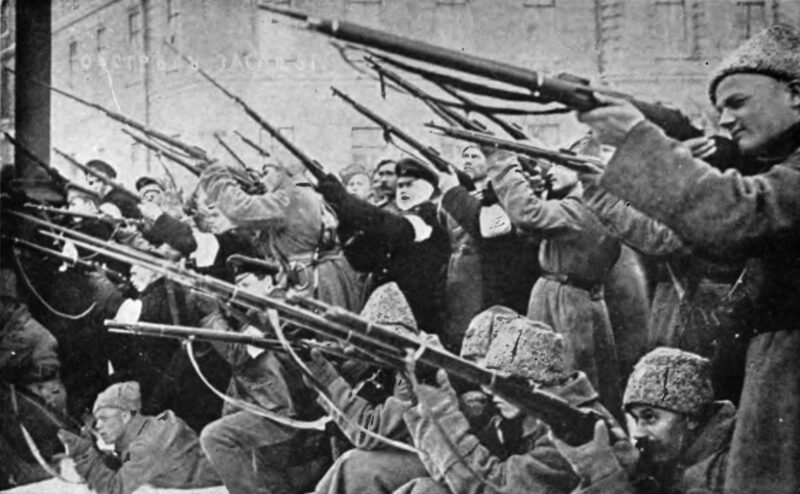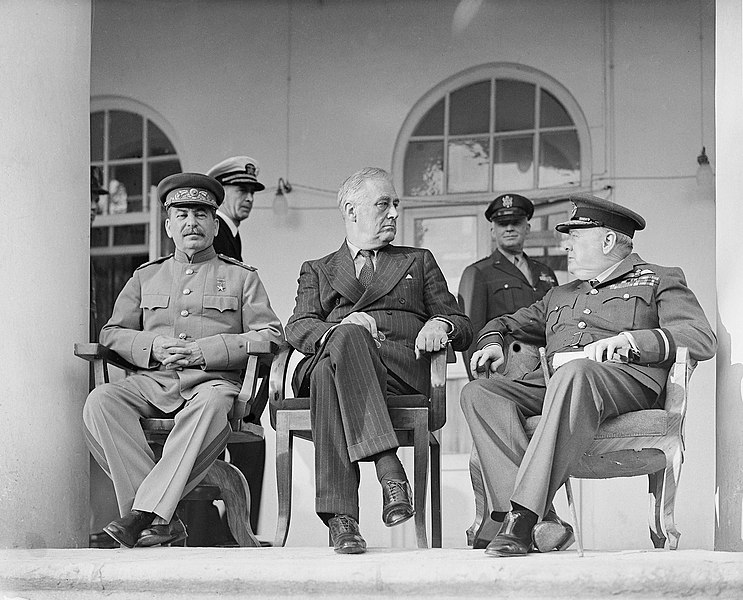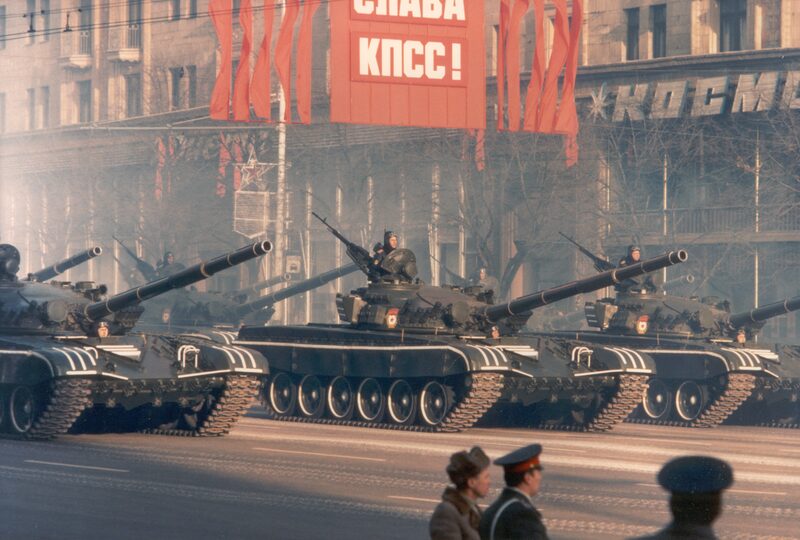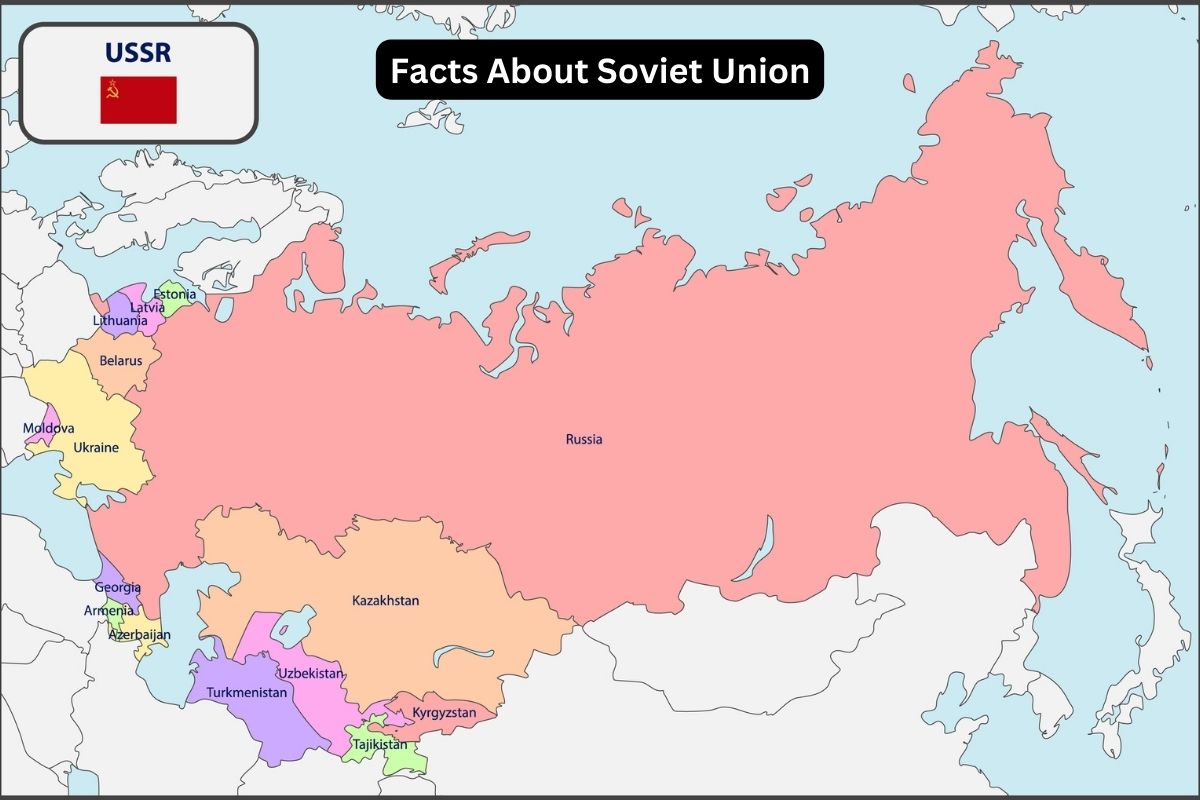In the annals of history, few entities have left as indelible a mark on the 20th century as the Soviet Union. From its tumultuous birth amidst the flames of revolution to its dramatic collapse on the eve of a new era, the USSR shaped the course of global politics, culture, and ideology in ways that reverberate to this day.
Delving into the depths of its rise, reign, and ultimate demise, this article seeks to unravel the enigma of the Soviet Union, examining its enduring legacy and the complex tapestry of memories, impacts, and interpretations it has left behind.
Join us on a journey through the corridors of power, the echoes of ideology, and the shadows of history, as we explore the multifaceted story of one of the most formidable forces of the modern age.
Soviet Union Facts
1. Formed on December 30, 1922, after the Russian Revolution
The Soviet Union, officially known as the Union of Soviet Socialist Republics (USSR), was established on December 30, 1922, following the Russian Revolution of 1917.
The revolution overthrew the Tsarist autocracy and led to the rise of the Bolshevik Party, under the leadership of Vladimir Lenin. The Bolsheviks, advocating for the establishment of a socialist state, consolidated power during the subsequent Civil War, eventually leading to the formation of the USSR.

2. Covered a vast territory, making it the largest country by land area
At its greatest extent, the Soviet Union covered a vast territory spanning over 22,402,200 square kilometers (8,649,500 square miles), making it the largest country by land area in the world.
Also Read: Joseph Stalin Accomplishments
It encompassed 15 republics, including Russia, Ukraine, Belarus, Kazakhstan, and others. This immense geographical expanse incorporated a diverse range of cultures, languages, and ethnicities, contributing to the complexity of governance within the Soviet Union.
3. Founded on Marxist-Leninist ideology, advocating for communism
The Soviet Union was founded on Marxist-Leninist ideology, which sought to establish a classless society based on common ownership of the means of production and the abolition of private property.
Lenin adapted Marxist theory to the conditions of Russia, emphasizing the importance of a vanguard party to lead the proletariat in overthrowing the bourgeoisie.
Also Read: Timeline of the Soviet Union
The Communist Party of the Soviet Union (CPSU) became the ruling party, exercising authoritarian control over all aspects of society, economy, and politics.
The Soviet state aimed to transition from socialism to communism, a utopian society where resources are distributed according to need, but this transition was never fully realized.
4. Implemented ambitious Five-Year Plans for rapid industrialization
Under the leadership of Joseph Stalin, the Soviet Union implemented a series of ambitious economic plans known as the Five-Year Plans, beginning in 1928.
These plans aimed at rapidly industrializing the country and collectivizing agriculture to transform the Soviet Union from an agrarian society into an industrial powerhouse.
The first Five-Year Plan focused on heavy industry, such as steel, coal, and machinery production, while subsequent plans expanded into other sectors like consumer goods and agriculture.
Despite achieving significant industrial growth, the plans resulted in widespread human suffering due to forced labor, famines, and political purges.

5. Emerged as a Cold War superpower alongside the United States
Following World War II, the Soviet Union emerged as one of the two superpowers alongside the United States, marking the beginning of the Cold War.
The rivalry between the two nations was characterized by ideological, political, and military competition rather than direct conflict. This period saw the proliferation of nuclear weapons, espionage, and proxy wars in regions such as Korea, Vietnam, and Afghanistan.
The Soviet Union’s acquisition of nuclear capabilities and its space achievements, including launching the first artificial satellite, Sputnik 1, in 1957, further solidified its status as a global superpower.
6. Achieved significant milestones in space exploration, including launching the first artificial satellite, Sputnik 1
The Soviet Union made significant strides in space exploration during the Cold War era. In addition to launching Sputnik 1, the world’s first artificial satellite, the Soviet space program achieved several other milestones.
In 1961, Yuri Gagarin became the first human to journey into space aboard the spacecraft Vostok 1, orbiting the Earth once before safely returning.
The Soviet Union also conducted the first spacewalk in 1965, when cosmonaut Alexei Leonov exited his spacecraft, Voskhod 2, for a 12-minute extravehicular activity.
Furthermore, the Soviet Luna program successfully conducted the first unmanned missions to the Moon, including the first soft landing and the first robotic sample return mission. These achievements demonstrated the Soviet Union’s technological prowess and contributed to the space race with the United States.
7. Socialist realism dominated Soviet cultural expression
Soviet culture was deeply influenced by the state’s socialist ideology. Socialist realism became the dominant artistic style, emphasizing the glorification of the working class, industrialization, and the achievements of the Soviet state.
Artists, writers, and filmmakers were expected to produce works that promoted communist ideals and celebrated the achievements of the Soviet regime. However, this artistic censorship also led to the suppression of dissenting voices and stifled creativity in some cases.
Despite this, Soviet literature, cinema, and visual arts produced iconic works that reflected the social, political, and cultural landscape of the time.

8. Dissolved on December 26, 1991, following internal challenges and reforms
The Soviet Union faced mounting internal challenges in the latter half of the 20th century, including economic stagnation, political repression, ethnic tensions, and military overstretch.
Mikhail Gorbachev’s policies of glasnost (openness) and perestroika (restructuring) aimed to address these issues by introducing political and economic reforms. However, these reforms inadvertently accelerated the dissolution of the Soviet Union.
The constituent republics began to assert their independence, leading to a wave of declarations of sovereignty and eventual secession. On December 26, 1991, the leaders of Russia, Ukraine, and Belarus declared the dissolution of the Soviet Union, marking the end of the communist regime.
9. Legacy includes geopolitical implications and the emergence of new independent states
The collapse of the Soviet Union had profound geopolitical implications, marking the end of the Cold War and the emergence of a unipolar world order dominated by the United States.
The dissolution of the USSR led to the independence of 15 newly sovereign states, each inheriting varying degrees of economic, political, and social challenges.
The legacy of the Soviet Union continues to shape the political and cultural landscape of the post-Soviet space, with some countries embracing democratic reforms and market economies, while others have struggled with authoritarianism, corruption, and ethnic conflicts.
10. Continues to influence global politics, culture, and historical memory
The memory of the Soviet Union remains a contentious issue in the former Soviet republics and beyond. While some view the Soviet era nostalgically, recalling achievements in space exploration, industrialization, and social welfare, others remember the period with resentment, highlighting the repression, human rights abuses, and economic mismanagement under communist rule.
The impact of the Soviet Union extends beyond its former borders, influencing global politics, culture, and historical narratives. Debates persist about its legacy, with differing interpretations shaping contemporary discourse on socialism, communism, and the post-Cold War world order.
